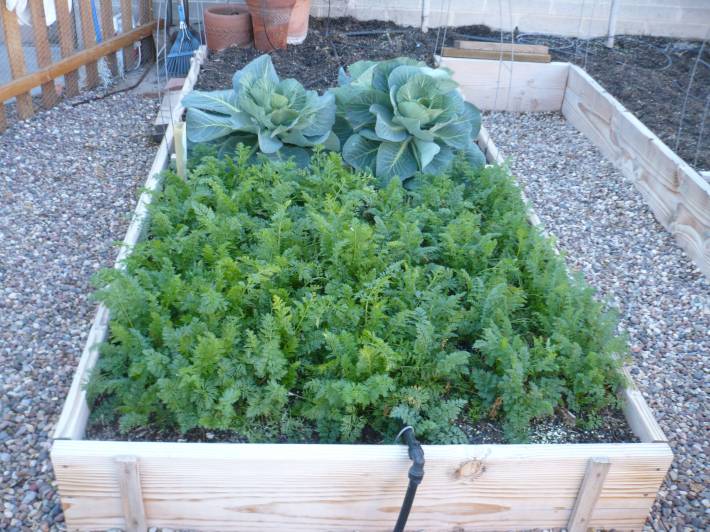The days are getting longer, and winter garden season is officially over. We are in the process of getting rid of what’s left of our winter garden plants, and preparing the soil to plant things for the spring/summer.
Our own winter garden was very small and basic, with only broccoli. We just didn’t have anywhere else to plant (because of the movement of the sun, our summer garden plot is covered in shade in the winter).
That said, we did get a good harvest of broccoli. It took longer than expected and everything was mostly ready to eat at the end of February/early March. Taking the shade cover off our patio made a big difference. Sun is real important.

Broccoli plants in our patio planter
The community garden broccoli (which is actually just in our neighbor’s backyard) did really well. We planted a lot of it (about 30 plants), and ate a lot of it. My only hope for next time is to space out the planting a bit, so we don’t have nothing for months, then end up overrun with broccoli in the course of a couple of weeks.

Broccoli plant in the community garden
The kale and Swiss chard also did well. The kale did seem to get nibbled on my something, so many of the leaves had holes in them, but nothing was destroyed. We’ve removed all the broccoli plants now, but the kale and Swiss chard are sticking around for a few more weeks, we hope. Which is great, because I’ve found they can be added to pretty much any dish.

Our two kale plants in community garden

Kale and Swiss chard plants in the community garden
The radishes did quite well and became pretty big. Those have been pulled up now. The beets, on the other hand, still haven’t grown that big. They remain in the ground, next to where we pulled up the radishes and broccolis, in hopes now they have some space and more sun that they’ll get ripe. We’ll see…

Beet plants in the community garden – still not that big
The cabbage plants took a while to get form their heads and were just recently ready to begin harvesting. We encouraged them by tying the inside leaves together to help form a head. The first cabbage I harvested is what I used for the Irish Stew, although before that I had been picking a leaf here or there.

Cabbage plants in the community garden
The purple cauliflower did pretty well and tasted good, although it always seemed a little “stemmy” – like the heads never formed as thick & solid as you would see in a cauliflower at your grocery. That could just be the variety, though.

Purple cauliflower harvested from the community garden
The carrots were delicious, but they never grew as large as we’d hoped. We’re pretty sure it’s because they just didn’t get enough sun. As the sun has been shifting over the past several weeks, we’ve already noticed them to start to get taller. Next year, we’ll need to find another spot for the carrots.

Two carrots from the community garden
The onion and garlic seems to be doing well. These take almost a year until they are ready to harvest, so we just have to be patient.

Onion and garlic plants in the community garden
The winter garden did seem to require less maintenance – less watering, obviously, but also no need to worry about shade cloths, and the bugs/worms didn’t seem to be much of an issue. The season does seem shorter though. It feels like we just planted stuff and it’s already over. But we are looking forward to picking out our plants for the upcoming summer season!












































